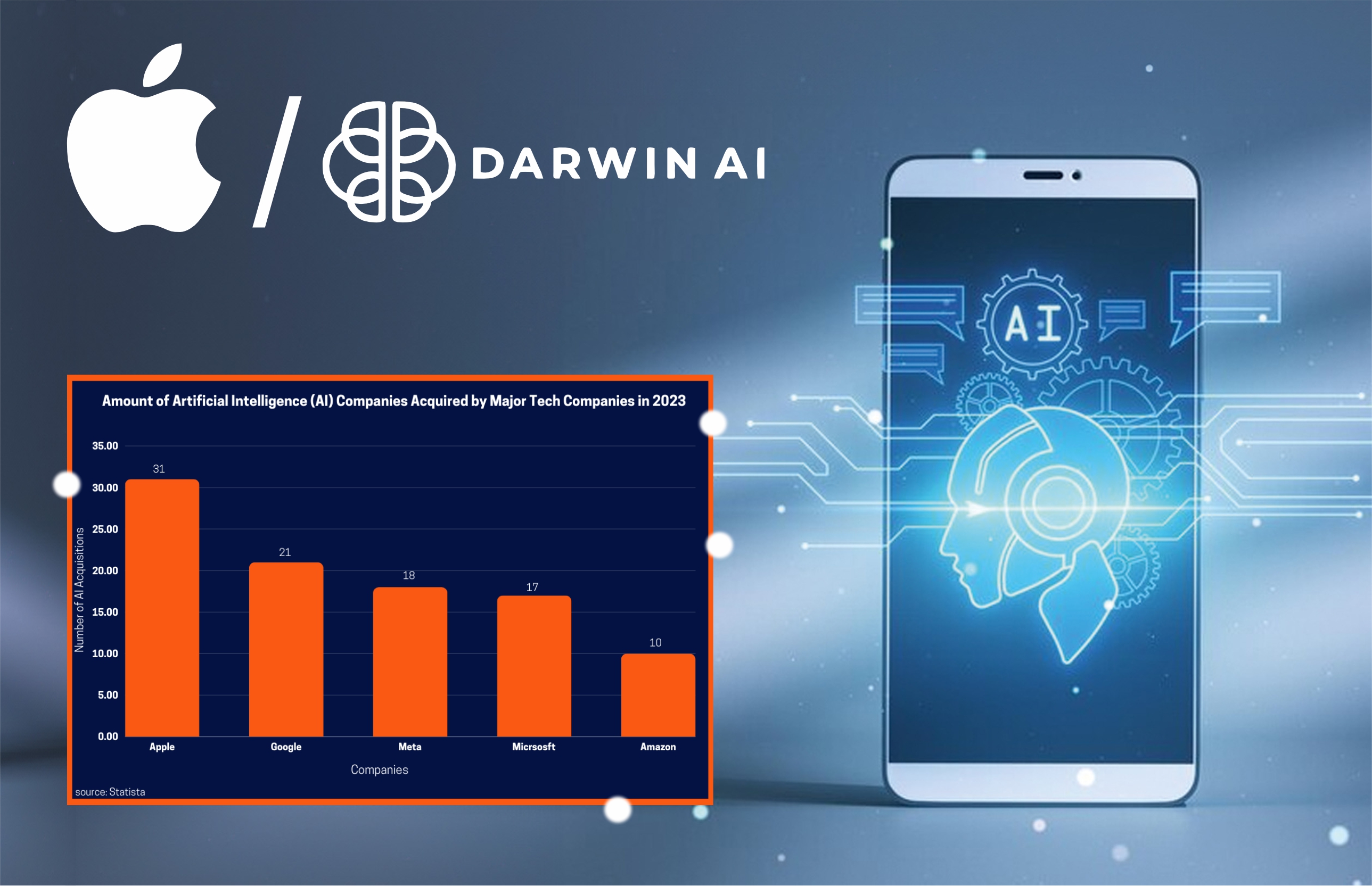Introduction:
Apple, the globally recognized leader in consumer electronics, has quietly positioned itself as a formidable force in the realm of Artificial Intelligence (AI). While its competitors flaunt extensive AI research divisions, Apple has tactfully pursued a strategy of strategic acquisitions, shaping its approach to AI development.
The Significance of AI for Apple:
Despite maintaining a low profile on its AI endeavors, Apple heavily relies on AI technologies to enrich its products and services. AI permeates essential features such as facial recognition, Siri's capabilities, and personalized recommendations, underscoring its pivotal role in enhancing user experiences. Moreover, industry analysts speculate that Apple's AI ambitions extend beyond mere feature enhancements to encompass transformative projects like self-driving vehicles and innovative healthcare solutions.
Apple's Acquisitions Strategy: A Laser-Focused Approach:
In contrast to its rivals' broad acquisition strategies, Apple adopts a targeted approach, meticulously selecting smaller AI startups aligned with its current and future strategic objectives. By prioritizing acquisitions that complement its existing product lines and potential future ventures, Apple has cultivated a reputation as a discerning acquirer within the AI landscape.
Notable Acquisitions:
- Xnor.ai (2018): This acquisition bolstered Apple's capabilities in developing efficient on-device AI models, ensuring faster processing and heightened privacy for features like image recognition on iPhones. Notably, Xnor.ai's focus on on-device processing aligns with Apple's commitment to user privacy and data security.
- Lighthouse AI (2019): By acquiring Lighthouse AI, Apple augmented its expertise in developing AI-powered security features for smart home devices. As Apple expands its HomeKit ecosystem, robust security measures are imperative, and Lighthouse AI's proficiency addresses this crucial requirement.
- Drive.ai (2020): Apple's acquisition of Drive.ai signaled its potential interest in the autonomous vehicle sector, leveraging Drive.ai's expertise in self-driving car technology. While Apple remains tight-lipped about its autonomous vehicle endeavors, the acquisition underscores its exploration of this transformative technology.
- DarwinAI (2024): This recent acquisition marked Apple's significant foray into AI applications for manufacturing. DarwinAI specializes in computer vision technology tailored for industrial settings, enabling AI systems to visually inspect components during manufacturing processes to ensure quality control.
Benefits and Challenges of Apple's Approach:
While Apple's acquisition strategy offers expedited access to cutting-edge technology and talent, it presents notable challenges. Integrating acquired companies into Apple's closed ecosystem necessitates addressing cultural disparities, talent retention concerns, and knowledge transfer inefficiencies.
Addressing Integration Hurdles:
To surmount integration challenges, Apple must strike a delicate balance between its hierarchical corporate structure and the agile, entrepreneurial ethos prevalent in startups. Empowering acquired firms with autonomy, fostering collaborative environments, and implementing robust retention strategies are essential for seamless integration and sustained innovation.
The Open-Source Debate:
Amidst discussions surrounding Apple's closed acquisitions, advocates of open-source AI development emphasize the merits of collaborative innovation and knowledge sharing. However, concerns regarding intellectual property protection, quality control, and data privacy underscore the complexity of this debate.
Apple's Likely Approach:
While Apple is unlikely to embrace a fully open-source AI development model, it may explore a hybrid approach, collaborating selectively with research institutions while safeguarding proprietary technologies. By striking a balance between closed acquisitions and open innovation, Apple can maximize the synergistic benefits of both approaches.
Envisioning Apple's AI Future:
Speculation abounds regarding potential ventures such as the development of an "iCar" and AI-powered healthcare assistants. Furthermore, AI holds the promise of delivering personalized experiences across Apple's ecosystem, revolutionizing user interactions and redefining the boundaries of technological innovation.
Conclusion:
As Apple unveils its AI ambitions, it navigates a nuanced landscape defined by closed acquisitions and open innovation. While its emphasis on user privacy, design excellence, and proprietary technologies confer competitive advantages, addressing integration challenges and ethical considerations remains paramount. Whether Apple is catching up with competitors or charting a pioneering path forward, its success in harnessing the power of AI will undoubtedly shape the trajectory of technology and redefine the future of user-centric innovation.

